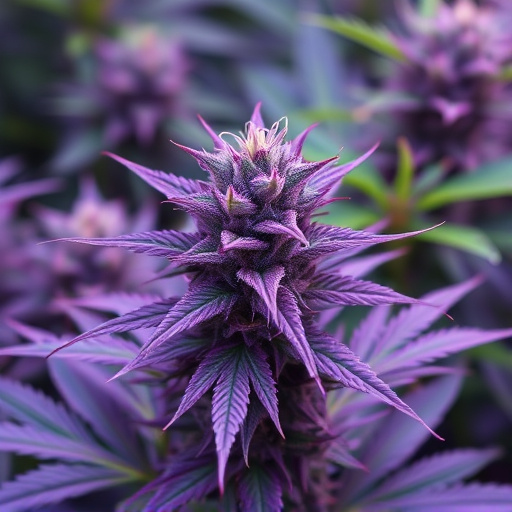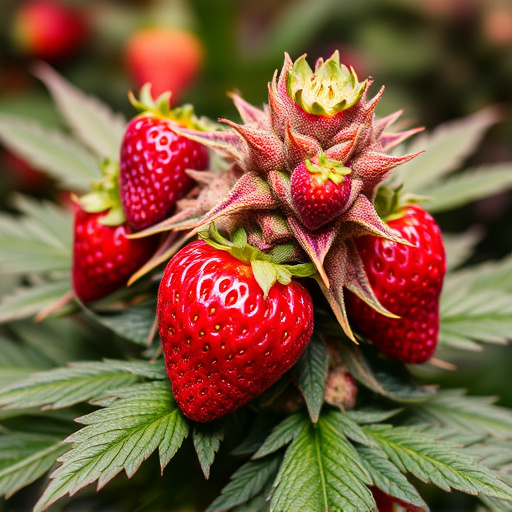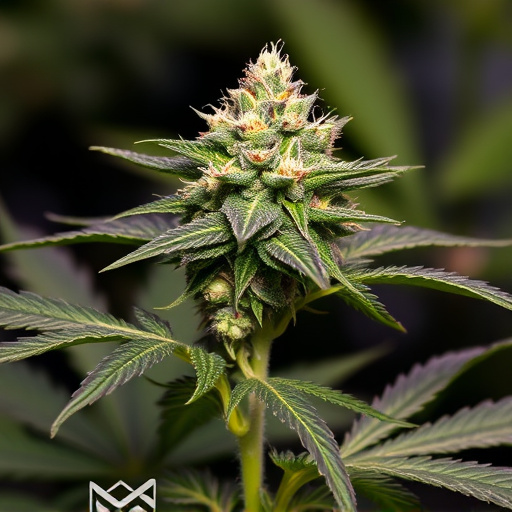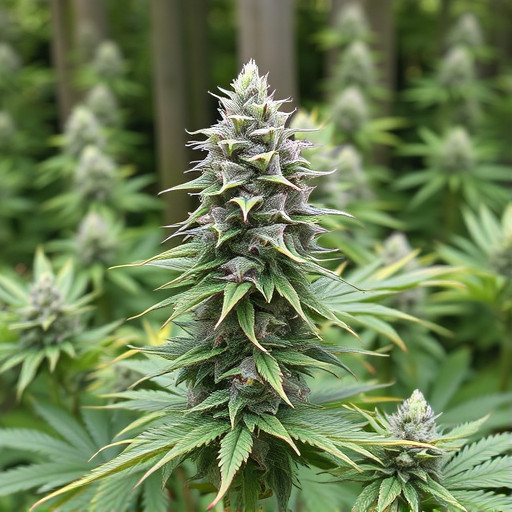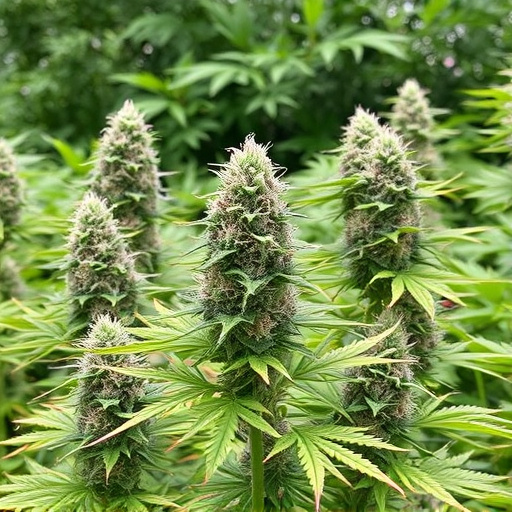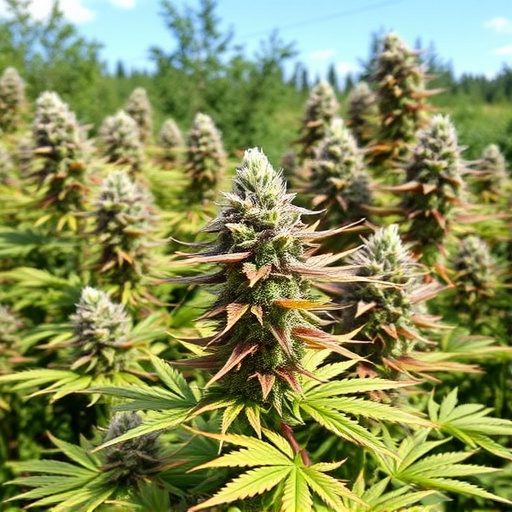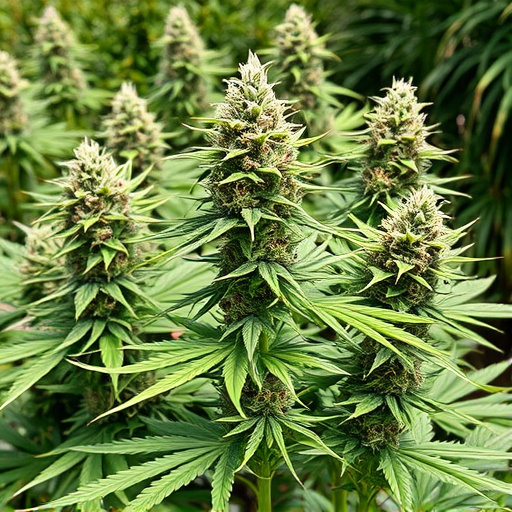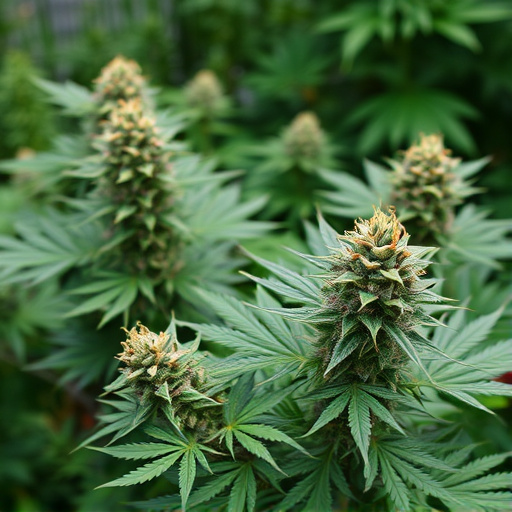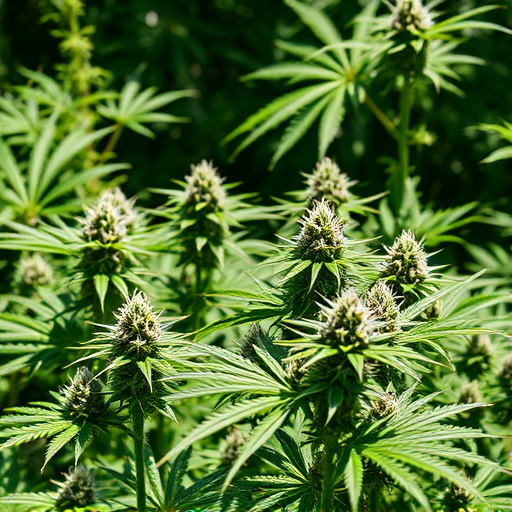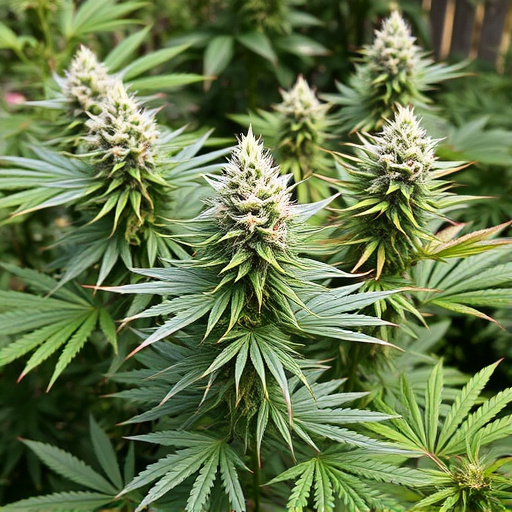Outdoor cannabis strains are gaining recognition for their therapeutic benefits in managing pain and anxiety, thanks to higher levels of cannabinoids like THC and CBD, as well as a broader spectrum of terpenes and flavonoids due to natural growing conditions. These factors enhance their potency and efficacy compared to indoor-grown varieties. However, caution is advised when using cannabis due to potential risks and adverse effects, with proper education crucial for users. Future research on outdoor strains holds promise for optimal dosing, long-term effects, and innovative medical applications.
Cannabis flower, with its diverse compounds and terpenes, has gained attention for its potential therapeutic benefits, particularly in managing pain and anxiety. This article explores how cannabis can offer natural relief, delving into the science behind its effects on the body’s endocannabinoid system. We discuss the unique advantages of outdoor cannabis strains, known for their robust potency and distinct chemical profiles, as well as safety considerations. By examining current research and future prospects, this guide aims to provide insights into cannabis’s role in alternative pain and anxiety management.
- Understanding Cannabis Flower and Its Effects on Pain and Anxiety
- The Role of Outdoor Cannabis Strains in Therapy
- Safety Considerations and Future Research Directions
Understanding Cannabis Flower and Its Effects on Pain and Anxiety
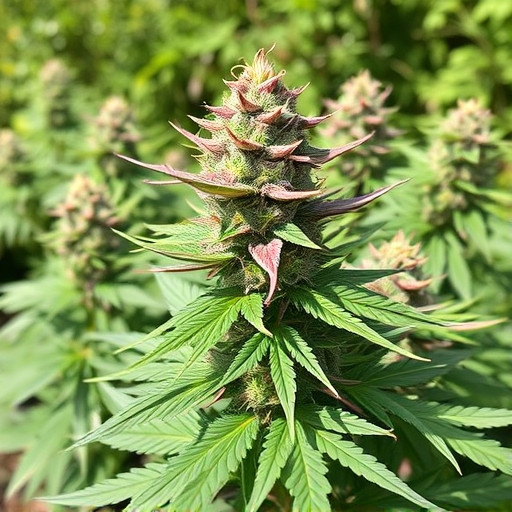
Cannabis flower, derived from the hemp plant, has gained significant attention for its potential therapeutic benefits in managing pain and anxiety. At the heart of this discussion are outdoor cannabis strains, which offer a diverse range of chemical compounds known as cannabinoids. Among these, THC (Tetrahydrocannabinol) and CBD (Cannabidiol) are the most well-studied.
THC is known for its psychoactive effects, inducing feelings of euphoria and relaxation, which can be beneficial in reducing anxiety symptoms. Meanwhile, CBD is non-intoxicating yet potent in interacting with the endocannabinoid system to modulate pain perception and induce calmness. Understanding the unique interplay between these cannabinoids and our body’s natural systems offers a glimpse into how outdoor cannabis strains can provide relief for those seeking alternatives in managing chronic pain and anxiousness.
The Role of Outdoor Cannabis Strains in Therapy
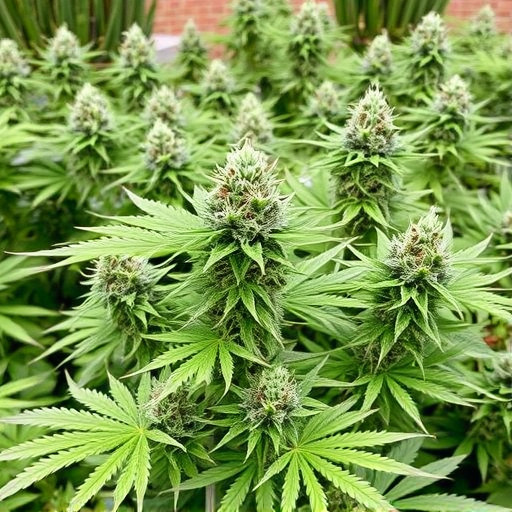
Outdoor cannabis strains have gained significant attention for their potential therapeutic benefits, particularly in managing pain and anxiety. These strains often boast higher levels of natural cannabinoids like THC and CBD, which interact with the body’s endocannabinoid system to regulate mood, memory, and perception of pain. The unique environmental factors that outdoor-grown plants experience—such as varying sunlight exposure, nutrient-rich soils, and clean air—can contribute to a broader spectrum of terpenes and flavonoids, enhancing their overall potency and efficacy in therapeutic applications.
Compared to indoor cultivation methods, outdoor cannabis strains tend to be more diverse genetically, leading to a wider variety of medicinal properties. This genetic diversity allows for a more personalized approach to treatment, where specific strains can be selected based on individual needs and preferences. Moreover, the natural growing conditions promote robust plant health, resulting in higher quality and potent flowers that may offer more substantial relief for those seeking alternative treatments for pain and anxiety.
Safety Considerations and Future Research Directions
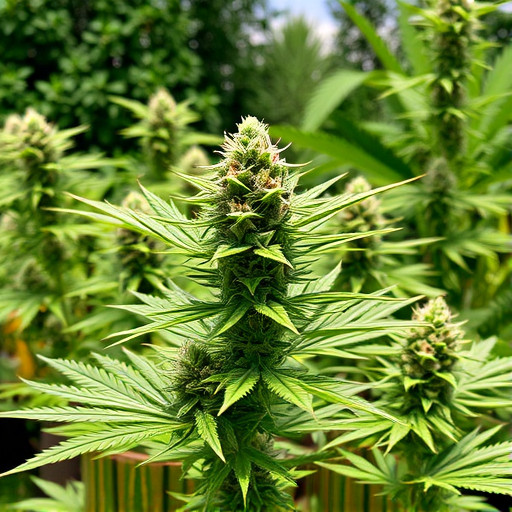
Cannabis flower, especially outdoor cannabis strains, has gained attention for its potential therapeutic effects on pain and anxiety. However, it’s crucial to approach its use with safety considerations in mind. While many people find relief through various methods like aromatherapy, tinctures, or topical applications, consuming cannabis carries risks, including potential interactions with medications and the possibility of adverse effects such as dizziness or paranoia. Additionally, the concentration of cannabinoids, like THC and CBD, varies greatly among strains, requiring users to educate themselves thoroughly before consumption.
Looking ahead, future research on outdoor cannabis strains holds promise for expanding our understanding of its medical benefits. Further studies could shed light on optimal dosing, long-term effects, and the development of new treatments combining cannabis with conventional therapies. This exploration is essential to unlock the full potential of cannabis while ensuring safe and effective use for those seeking relief from pain and anxiety.
Cannabis flower, with its diverse compounds and terpene profiles, offers promising therapeutic potential for managing pain and anxiety. Outdoor cannabis strains, in particular, have gained attention for their unique benefits, providing a natural approach to wellness. While further research is warranted to explore safety and efficacy, the current evidence suggests that cannabis could be a valuable tool in alternative medicine, offering relief and improved quality of life for those seeking non-pharmaceutical options for pain and anxiety management. Incorporating outdoor cannabis strains into therapeutic practices may open doors to innovative treatments, allowing individuals to harness the power of nature for their overall well-being.
